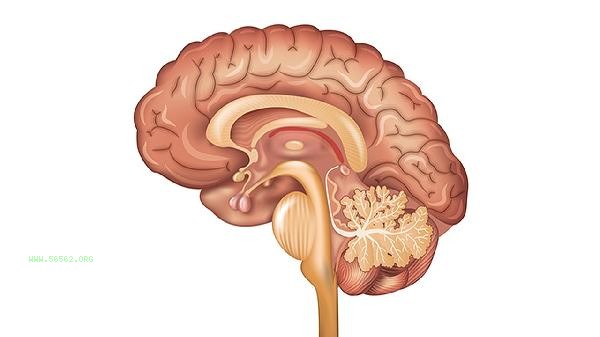The low basal metabolic rate in patients with pituitary obesity is mainly related to hormone secretion disorders caused by pituitary dysfunction. Common factors include growth hormone deficiency, hypothyroidism, adrenal cortex hyperfunction, insulin resistance, and leptin signaling disorders.

1. Growth hormone deficiency
Pituitary lesions may inhibit the secretion of growth hormone, which promotes fat breakdown and energy expenditure. Insufficient levels of growth hormone can lead to decreased lipoprotein activity, reduced fat oxidation, and decreased metabolic rate of muscle tissue. The patient may exhibit characteristic symptoms of slender limbs but abdominal fat accumulation, which can be clinically diagnosed through growth hormone stimulation testing.
2. Hypothyroidism
Insufficient secretion of pituitary thyroid stimulating hormone can cause secondary hypothyroidism, and a decrease in thyroid hormone levels directly leads to a reduction in mitochondrial heat production and a significant decrease in basal metabolic rate. Patients often have symptoms such as fear of cold and dry skin. Laboratory tests show a decrease in free thyroxine while thyroid stimulating hormone is normal or low.
3. Adrenal cortex hyperfunction
Cushing's syndrome caused by pituitary ACTH adenoma can lead to excessive secretion of cortisol, which promotes protein breakdown and inhibits glucose utilization, making the body inclined to store fat. Long term high cortisol levels can reduce brown adipose tissue activity, decrease calorie expenditure, and lead to central obesity and metabolic syndrome.

4. Insulin resistance
Pituitary hormone disorders are often accompanied by hyperinsulinemia, where decreased insulin sensitivity prevents glucose from effectively entering cells for energy supply and instead synthesizes fat for storage. This metabolic state can trigger abnormal energy perception in the hypothalamus, leading the body to misjudge energy deficiency and further reduce basal metabolism, forming a vicious cycle.
5. Dysregulation of leptin signaling
Pituitary dysfunction may interfere with the feedback regulation of leptin to the hypothalamus. Although obese individuals have increased secretion of leptin from adipose tissue, the sensitivity of the central nervous system to leptin is reduced. This resistance state can cause the hypothalamus to misjudge insufficient body fat reserves and reduce energy expenditure by lowering sympathetic nervous system excitability and thyroid function. Patients with pituitary obesity need to undergo a systematic evaluation under the guidance of an endocrinologist, including pituitary MRI, complete hormone testing, and metabolic index examination. Treatment should be targeted at the primary cause, such as pituitary adenoma patients who may require surgery or radiation therapy, and hormone replacement therapy should be strictly monitored. Regular daily routines should be maintained to avoid high glycemic index diets. Resistance training combined with aerobic exercise should be carried out under the guidance of professionals to gradually improve muscle mass and insulin sensitivity. Be careful to avoid extreme dieting and regularly monitor changes in body composition and metabolic indicators.









Comments (0)
Leave a Comment
No comments yet
Be the first to share your thoughts!